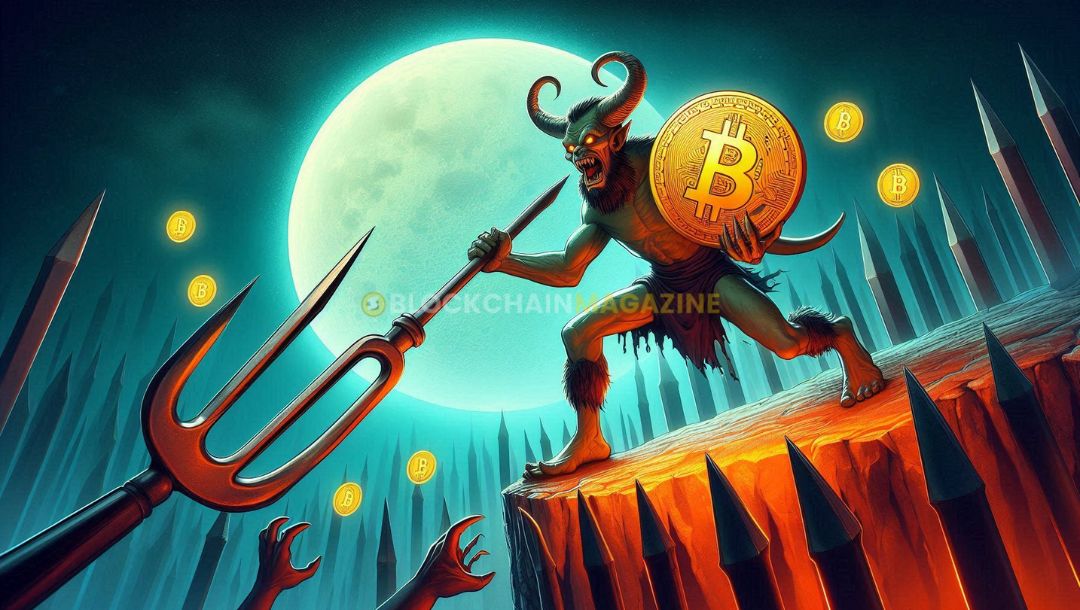Top 10 Intriguing Dangers of Hard Forks in Bitcoin Protocol Evolution
Bitcoin’s protocol evolution often involves hard forks, which can be risky. A hard fork happens when a single cryptocurrency splits into two. This can introduce a host of dangers that could impact the network and its users. Let’s explore the top 10 intriguing dangers of hard forks in Bitcoin’s protocol evolution.
Key Takeaways
- Network splits can lead to two separate blockchains, causing confusion and compatibility issues.
- Replay attacks can occur if transactions are replicated on both chains, leading to potential loss of funds.
- Double spending becomes a risk when the same bitcoin is spent on two different chains.
- Security can be reduced as the network’s hashing power is divided between the two chains.
- Trust in the network can be eroded, affecting user confidence and market stability.
1. Network Splits
When a hard fork occurs in the Bitcoin protocol, it can lead to network splits. This means the blockchain divides into two separate chains, each with its own set of rules. These splits can cause confusion and disrupt the network’s normal operations.
One major issue with network splits is that they can create two versions of the same cryptocurrency. This can be confusing for users and can lead to problems with transactions. For example, if you send Bitcoin on one chain, it might not be recognized on the other chain.
Another problem is that network splits can weaken the overall security of the Bitcoin network. When the network is divided, the computing power that secures the blockchain is also split. This makes each chain more vulnerable to attacks.
Network splits can also lead to a loss of trust among users. When people see that the network is divided, they might worry about the stability and reliability of Bitcoin. This can make them less likely to use or invest in the cryptocurrency.
2. Replay Attacks
Replay attacks are a significant risk in the world of Bitcoin hard forks. When a hard fork occurs, the blockchain splits into two separate chains. Transactions on one chain can be maliciously repeated on the other chain, leading to potential loss of funds.
To understand replay attacks better, consider the following points:
- Replay attacks happen because both chains share the same transaction history up to the point of the fork.
- Attackers can exploit this by copying a transaction from one chain and broadcasting it on the other.
- This can result in double spending or unauthorized transfers.
It’s crucial to implement replay protection mechanisms to safeguard against these attacks. Without such measures, users are at risk of losing their assets.
In summary, replay attacks pose a serious threat to the security and trustworthiness of Bitcoin and other cryptocurrencies during hard forks.
3. Double Spending
Double spending is a serious issue in the Bitcoin network. It happens when someone tries to use the same Bitcoin more than once. This can lead to major problems, especially in finance.
Double spending can undermine trust in the entire Bitcoin system. If people think that their transactions are not secure, they might stop using Bitcoin altogether.
There are a few ways double spending can occur:
- Race Attack: Two transactions are sent at the same time, but only one gets confirmed.
- Finney Attack: A miner creates a block with a transaction, but doesn’t broadcast it immediately.
- Vector76 Attack: Combines elements of both race and Finney attacks.
Double spending is a threat that can shake the foundation of any cryptocurrency, making it less reliable and secure.
4. Reduced Security
When a hard fork occurs, the security of the Bitcoin network can be compromised. Splitting the network into two separate chains means that the overall security resources are divided. This can make both chains more vulnerable to attacks.
One major risk is the potential for a 51% attack. In this scenario, if one chain has fewer miners, it becomes easier for a bad actor to gain control of the majority of the network’s mining power. This could lead to double spending and other malicious activities.
Another concern is the introduction of new software bugs. When the code is changed, it can create unexpected vulnerabilities. These bugs can be exploited by hackers, further reducing the security of the network.
The german government’s strategic bitcoin liquidation impacts market sentiment and miner activity. Indicators suggest potential BTC rebound despite sell-offs. Blockchain magazine highlights finance and technology insights.
5. Loss of Trust
When a hard fork occurs, it can lead to a significant loss of trust within the Bitcoin community. This happens because users and investors may feel uncertain about the future of the network. They might worry that the forked chain will not be as secure or reliable as the original one.
Moreover, forks of other blocks or networks are eventually abandoned because of a lack of consensus. This makes the actual block longer and the more profitable one to mine. As a result, people might lose faith in the stability and value of Bitcoin.
- Users may hesitate to invest in Bitcoin.
- Businesses might be reluctant to accept Bitcoin as payment.
- Developers could be discouraged from working on Bitcoin projects.
Trust is the foundation of any currency, and without it, Bitcoin’s value and adoption could suffer greatly.
6. Market Volatility
When a hard fork happens in Bitcoin, it can cause a lot of changes in the market. Prices can go up and down quickly, making it hard for people to know what to do. This can make the cryptocurrency market very unpredictable.
- Investors might panic and sell their Bitcoin.
- New coins from the fork can confuse people.
- Some might see it as a chance to make quick money.
During a hard fork, it’s important to keep an eye on the market. Things can change fast, and it’s easy to get caught off guard.
7. Miner Centralization
Miner centralization is a significant concern in the Bitcoin network. When a few miners control a large portion of the mining power, it can lead to several issues. One major problem is the risk of a 51% attack, where a single entity could potentially manipulate the blockchain. This could undermine the security and trust in the entire system.
Another issue is the potential for reduced competition. If only a few miners dominate, it can stifle innovation and make the network less resilient to changes. This centralization can also lead to higher transaction fees, as the dominant miners could set prices to their advantage.
Moreover, miner centralization can impact the decentralized nature of Bitcoin. The original vision of Bitcoin was to have a distributed network where no single entity had too much control. Centralization goes against this principle and could make the network more vulnerable to external pressures.
When the bitcoin price drops below $54k, impacting mining profitability, it highlights the importance of maintaining a decentralized network. Market volatility expected due to Mt. Gox repayments further emphasizes the need to focus on Bitcoin’s price movements, liquidation data, and mining efficiency for future trends.
8. Software Bugs
Software bugs are an inevitable part of any complex system, and the Bitcoin protocol is no exception. When a hard fork occurs, new code is introduced, which can lead to unexpected issues. These bugs can cause significant disruptions in the network, affecting transactions and overall functionality.
One of the main concerns is that bugs can be exploited by malicious actors. This can result in loss of funds or other security breaches. Additionally, bugs can create inconsistencies between the original and forked chains, leading to confusion and potential loss of trust among users.
Another issue is the difficulty in identifying and fixing these bugs. Since the Bitcoin protocol is decentralized, coordinating a response can be challenging. This can prolong the time it takes to resolve issues, further impacting the network’s stability.
The resilience of crypto networks is often showcased during such outages, highlighting the superiority of blockchain technology. However, these incidents also emphasize the importance of thorough testing and robust development practices to minimize the risk of bugs.
In summary, while hard forks are sometimes necessary for the evolution of the Bitcoin protocol, they come with the risk of introducing software bugs that can have far-reaching consequences.
9. Governance Issues
Governance issues arise when there are disagreements among developers, miners, and users about the direction of the Bitcoin protocol. These disagreements can lead to hard forks, which split the network into separate blockchains. This can cause confusion and weaken the overall trust in the system.
One major problem is that hard forks can create competing versions of Bitcoin, each with its own rules and features. This can make it hard for users to know which version to support and can lead to a loss of confidence in the currency.
Another issue is that hard forks can be used as a tool for power struggles within the community. Different groups may push for changes that benefit them, rather than the network as a whole. This can lead to a fragmented community and a lack of clear leadership.
When the community is divided, it becomes difficult to make decisions that are in the best interest of the network. This can slow down development and make the system less secure.
In summary, governance issues related to hard forks can create a lot of uncertainty and instability in the Bitcoin network. It’s important for the community to work together to find solutions that benefit everyone.
10. Legal Complications
When a hard fork occurs, it can lead to a host of legal issues. One of the main problems is the uncertainty around which version of the cryptocurrency is the ‘real’ one. This can cause confusion and disputes among users and businesses.
Another issue is the potential for regulatory scrutiny. Governments and regulatory bodies may step in to determine the legality of the new forked currency. This can lead to legal battles and increased oversight.
Additionally, there are concerns about intellectual property. If the new forked currency uses similar technology or branding, it could result in lawsuits over copyright or trademark infringement.
Legal complications can slow down the adoption of the new currency and create a lot of uncertainty in the market.
In summary, the legal landscape becomes much more complicated when a cryptocurrency undergoes a hard fork, leading to potential disputes, regulatory challenges, and intellectual property issues.
Legal issues can be a big headache when dealing with blockchain and cryptocurrencies. From regulatory hurdles to compliance challenges, navigating this space requires careful attention. To stay updated on the latest legal news and how it affects your investments, visit our website. Don’t miss out on crucial information that could impact your financial decisions.
Conclusion
In the end, hard forks in the Bitcoin protocol bring both excitement and risk. They can lead to new features and improvements, but they also come with dangers like security issues and community splits. It’s important for everyone involved to think carefully about the possible outcomes before making any changes. By understanding these risks, we can make better decisions and help Bitcoin grow in a safe and stable way. Let’s keep learning and working together to make the best choices for the future of Bitcoin.
Frequently Asked Questions
What is a hard fork in Bitcoin?
A hard fork in Bitcoin is a big change in the rules that makes old and new versions of the software incompatible.
Why do network splits happen during a hard fork?
Network splits happen because some people use the old rules while others use the new ones, creating two separate groups.
What is a replay attack?
A replay attack is when a transaction on one version of the blockchain is copied to another version, causing problems.
Can hard forks cause double spending?
Yes, hard forks can lead to double spending, where the same Bitcoin is spent more than once.
How does a hard fork affect Bitcoin’s security?
A hard fork can reduce Bitcoin’s security by splitting the network and making it weaker.
Why do hard forks cause market volatility?
Hard forks cause market volatility because people get uncertain and prices can change a lot.
Stay informed with daily updates from Blockchain Magazine on Google News. Click here to follow us and mark as favorite: [Blockchain Magazine on Google News].
Get Blockchain Insights In Inbox
Stay ahead of the curve with expert analysis and market updates.
latest from tech
Disclaimer: Any post shared by a third-party agency are sponsored and Blockchain Magazine has no views on any such posts. The views and opinions expressed in this post are those of the clients and do not necessarily reflect the official policy or position of Blockchain Magazine. The information provided in this post is for informational purposes only and should not be considered as financial, investment, or professional advice. Blockchain Magazine does not endorse or promote any specific products, services, or companies mentioned in this posts. Readers are encouraged to conduct their own research and consult with a qualified professional before making any financial decisions. The featured image used is just a creative depiction of the title and it does not intend to hurt sentiments of any person or institution. If it hurts anyone sentiments, please do not hesitate to reach out to Blockchain Magazine.

 Bitcoin
Bitcoin  Ethereum
Ethereum  XRP
XRP  Tether
Tether  Solana
Solana  Dogecoin
Dogecoin  USDC
USDC  Cardano
Cardano  Lido Staked Ether
Lido Staked Ether  TRON
TRON  Chainlink
Chainlink  Avalanche
Avalanche  Sui
Sui  Wrapped stETH
Wrapped stETH  Wrapped Bitcoin
Wrapped Bitcoin  Stellar
Stellar  Toncoin
Toncoin  Hedera
Hedera  Shiba Inu
Shiba Inu  WETH
WETH  Polkadot
Polkadot  LEO Token
LEO Token  Bitcoin Cash
Bitcoin Cash  Litecoin
Litecoin  Official Trump
Official Trump  Hyperliquid
Hyperliquid  Bitget Token
Bitget Token  Uniswap
Uniswap  Pepe
Pepe  Wrapped eETH
Wrapped eETH  USDS
USDS  NEAR Protocol
NEAR Protocol  Ethena USDe
Ethena USDe  Aave
Aave  Aptos
Aptos  Internet Computer
Internet Computer  Ondo
Ondo  WhiteBIT Coin
WhiteBIT Coin  Monero
Monero  Ethereum Classic
Ethereum Classic  Cronos
Cronos  POL (ex-MATIC)
POL (ex-MATIC)  Mantle
Mantle  Render
Render  Dai
Dai  Bittensor
Bittensor  Algorand
Algorand 



